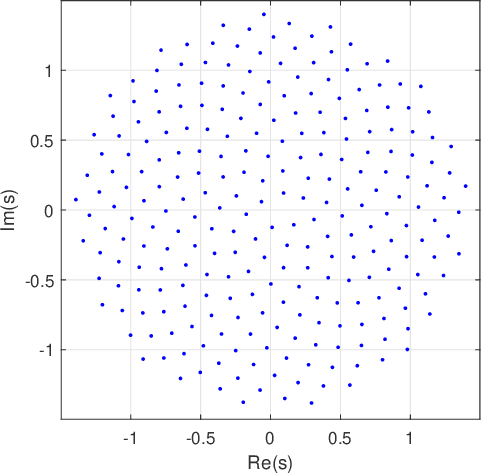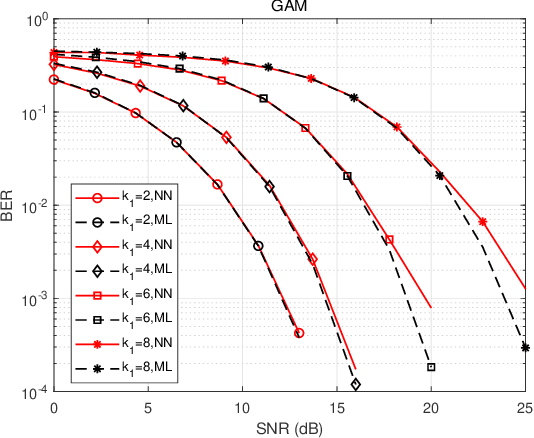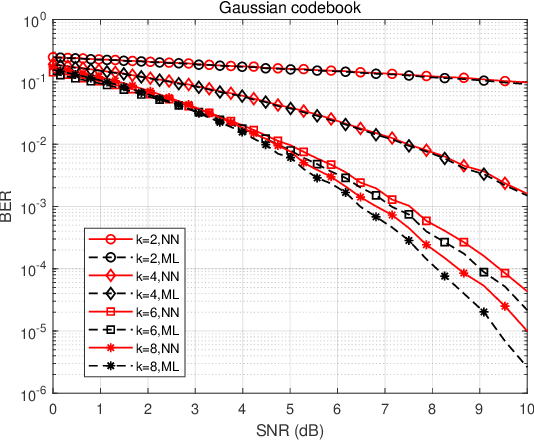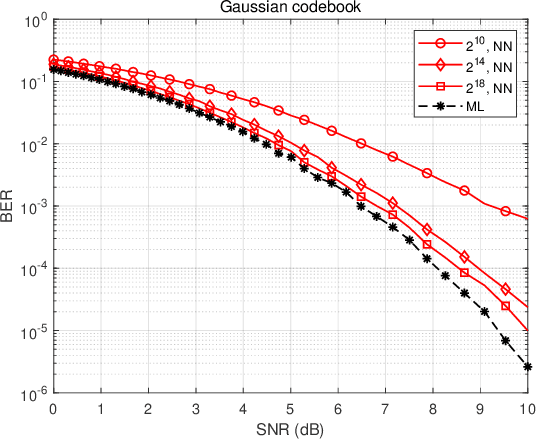Rethinking: Deep-learning-based Demodulation and Decoding
Paper and Code
Jun 13, 2022



In this paper, we focus on the demodulation/decoding of the complex modulations/codes that approach the Shannon capacity. Theoretically, the maximum likelihood (ML) algorithm can achieve the optimal error performance whereas it has $\mathcal{O}(2^k)$ demodulation/decoding complexity with $k$ denoting the number of information bits. Recent progress in deep learning provides a new direction to tackle the demodulation and the decoding. The purpose of this paper is to analyze the feasibility of the neural network to demodulate/decode the complex modulations/codes close to the Shannon capacity and characterize the error performance and the complexity of the neural network. Regarding the neural network demodulator, we use the golden angle modulation (GAM), a promising modulation format that can offer the Shannon capacity approaching performance, to evaluate the demodulator. It is observed that the neural network demodulator can get a close performance to the ML-based method while it suffers from the lower complexity order in the low-order GAM. Regarding the neural network decoder, we use the Gaussian codebook, achieving the Shannon capacity, to evaluate the decoder. We also observe that the neural network decoder achieves the error performance close to the ML decoder with a much lower complexity order in the small Gaussian codebook. Limited by the current training resources, we cannot evaluate the performance of the high-order modulation and the long codeword. But, based on the results of the low-order GAM and the small Gaussian codebook, we boldly give our conjecture: the neural network demodulator/decoder is a strong candidate approach for demodulating/decoding the complex modulations/codes close to the Shannon capacity owing to the error performance of the near-ML algorithm and the lower complexity.
 Add to Chrome
Add to Chrome Add to Firefox
Add to Firefox Add to Edge
Add to Edge